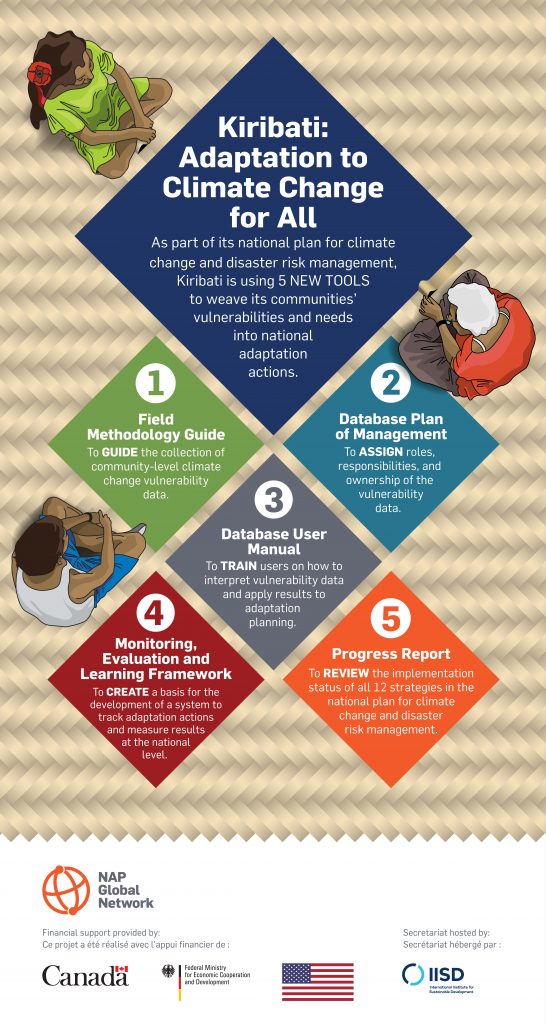The Government of Kiribati recognizes the risks that climate change poses to the livelihoods of its people. Accordingly, it is putting in place measures to ensure the activities they depend on can withstand more intense and frequent climate hazards.
Our team at the NAP Global Network recently helped Kiribati publish several important documents that work together to make sure these measures benefit everyone equally.
As indicated in the country’s climate change and disaster risk management plan (the “KJIP”), the Kiribati Integrated Vulnerability Assessment (KIVA) is a critical tool that uses a national, government-led, standardized approach to evaluate community vulnerabilities to climate change.
This approach supports the integration of local needs and priorities into national adaptation planning processes. Efforts are made to engage different social groups and collect sex- and age-disaggregated data for a more nuanced understanding of local vulnerabilities and related needs. This field data is collected by trained surveyors using mobile phones and is uploaded to an online national KIVA database.
To support the use of the KIVA and make sure the needs and vulnerabilities of everyone is included in national adaptation actions, the Government of Kiribati developed five new tools over the past two years to answer the following essential questions:
- What information are we looking for?
- The Field Methodological Guide outlines what vulnerability data will be collected at the community level to adequately represent the impacts of climate change that disrupt Kiribati livelihoods on its 21 inhabited islands.
- Who needs to be involved?
- The Database Plan of Management defines the roles and responsibilities included in the KIVA process. This document indicates who will use the database and who will have ownership of its content.
- How do we use the vulnerability data?
- The KIVA Database User Manual provides guidelines on how to use the online database and its information to identify which vulnerabilities need to be addressed in development planning at the national, sectoral, and subnational levels.
- How do we measure the progress being made?
- A Monitoring, Evaluation, and Learning Framework sets out how the country will measure progress on climate change adaptation.
- What have we already accomplished?
- The KJIP Implementation Progress Report 2014–2018 is the first evaluation of the progress made in implementing the 12 prioritized strategies in the national plan for climate change and disaster risk management, which are the responsibility of 19 lead agencies of Kiribati.
Kiribati is a country to follow when it comes to building resilience to climate change. In March 2020, the KIVA database was handed over from the Office of the President to the Bureau of Statistics. This is going to support the use of climate change vulnerability data in development planning. In the same year, members of Parliament requested access to their respective island IVA reports to integrate adaptation options into local initiatives. The country is making headway with these tools, and we will be following their every step.
